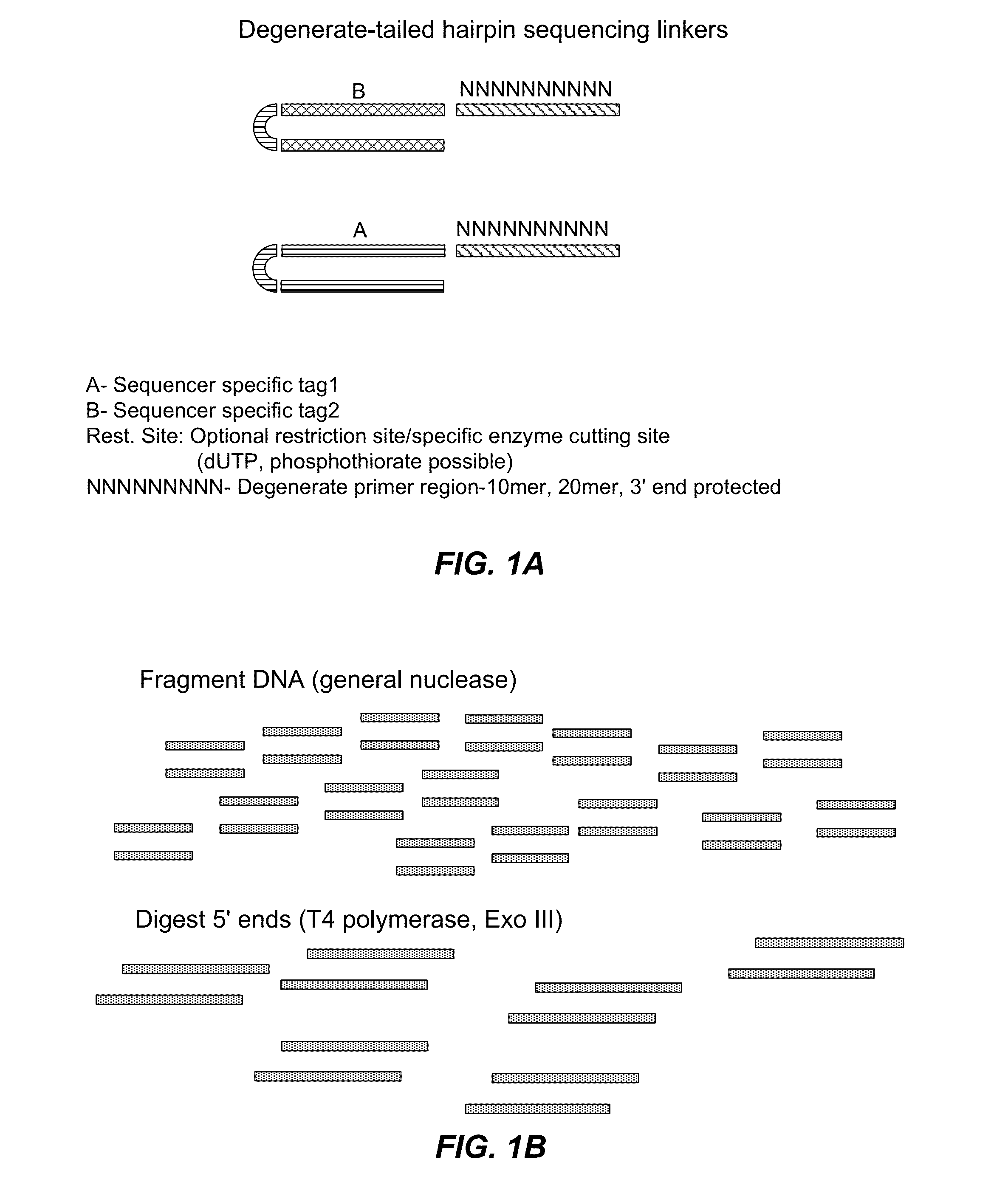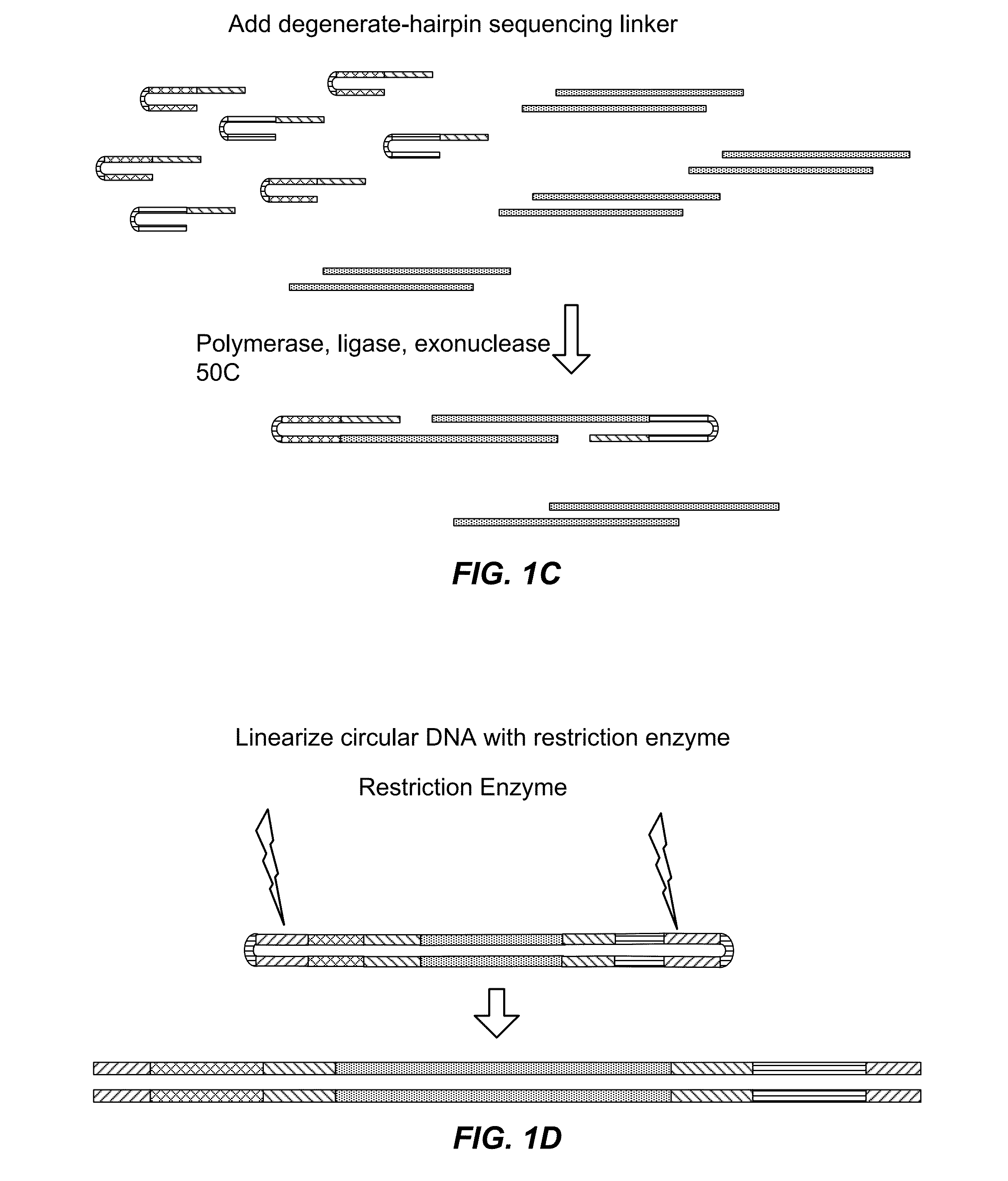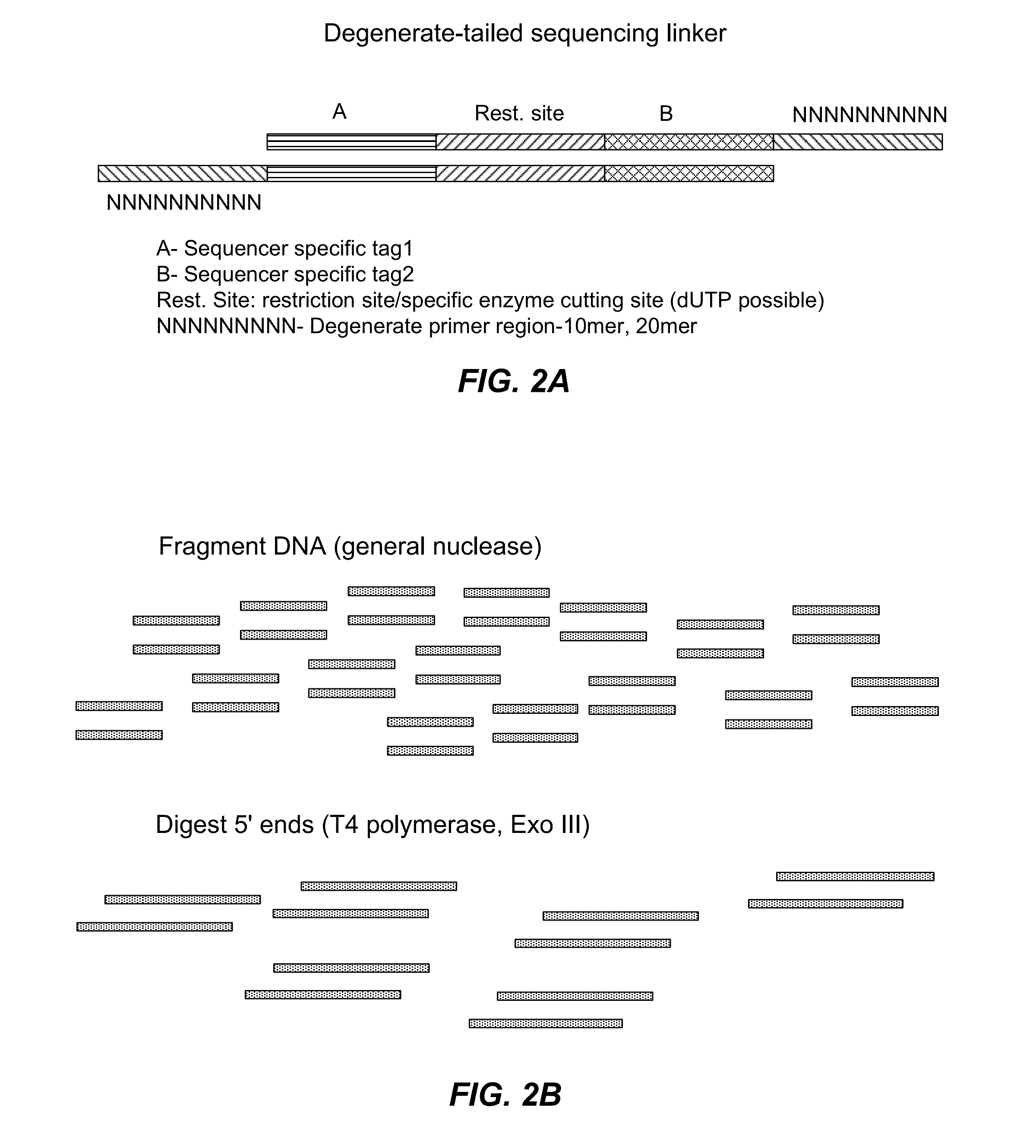Nucleic acid encoding reactions
a nucleic acid and encoding technology, applied in the field of nucleic acid encoding reactions, can solve the problems of hundreds of cells required to load the chip, and achieve the effect of avoiding substantial annealing to the target nucleic acid
- Summary
- Abstract
- Description
- Claims
- Application Information
AI Technical Summary
Benefits of technology
Problems solved by technology
Method used
Image
Examples
example 1
A General Library Preparation Method for DNA Sequencing
[0511]Current methods of preparing libraries for nucleic acid sequencing are cumbersome and require multiple steps. The essence of the methods involves random fragmentation of the DNA (for example), followed by end repair, polishing of fragment ends and ligation of end adaptors. These steps each require specific reaction conditions and purification of products between each step.
[0512]This Example and FIGS. 1 and 2 describe an alternative approach to library preparation. This approach uses a degenerate sequencing adaptor, which can be a double stranded DNA molecule that comprises the end adaptors (or portions thereof) for a given sequencer, a restriction enzyme digestion site (or other specific cleavage site), and flanking degenerate sequences at the 3′ end of both strands. Alternatively, the adaptors can be hairpin sequences, or double stranded oligonucleotides. It would also be possible for the end adaptors to be single-strande...
example 2
Combinatorial Ligation-Based Barcoding for Illumina Sequencing
[0516]Prepare DNA sequencing libraries, with standard PE2-BC-tag sequence replaced by RE-1-BC-tag. PE2 tag sequence downstream of barcode sequence replaced with recognition site (RE-1) for restriction enzyme, (e.g. BsrD1) which leaves short overhang:
5′-TGCATAGCAATGNN|CTAGGTGACTGGAGTTCAGACGTGTGCTCTTCCGATCT-Target-3′ (SEQ ID NO:2)
3′-ACGTATCGTTAC|NNGATCCACTGACCTCAAGTCTGCACACGAGAAGGCTAGA-Target-5′ (SEQ ID NO:3)
[0517]Cut library with enzyme.
[0518]Ligate adapter molecules containing the appropriate overhang and a second barcode sequence:
(SEQ ID NO: 4)5′-CAAGCAGAAGACGGCATACGAGATAGCTNN + CTAGGTGACTGGAGTTCAGACGTGTGCTCTTCCGATCT-Target-3′(SEQ ID NO: 5)3′-GTTCGTCTTCTGCCGTATGCTCTATCGA NNGATCCACTGACCTCAAGTCTGCACACGAGAAGGCTAGA-Target-5′
[0519]Ligation will result in the following construct:
(SEQ ID NO: 6)5′-CAAGCAGAAGACGGCATACGAGATAGCTNNCTAGGTGACTGGAGTTCAGACGTGTGCTCTTCCGATCT-Target-3′(SEQ ID NO: 7)3′-GTTCGTCTTCTGCCGTATGCTCTATCGANNGATCCACT...
example 3
Single-Cell Analysis of Gene Expression
[0522]Problem:
[0523]To obtain single cell gene expression data for a panel of genes using a DYNAMIC ARRAY™ IFC, the cell is first be isolated in a tube off-chip. The methods to isolate this cell are difficult to perform and / or require a large number of cells. Where cells are limited, such as primary cells from tissue and / or cells from drug screening experiments in mini-well plates, this last obstacle becomes more of a barrier to obtaining gene expression data from single cells using the BioMark.
[0524]Solution:
[0525]An ACCESS ARRAY™ IFC (“chip”), or similar chip that allows recovery of reaction mixtures, can be used to load single cells via limiting dilution (MA006 chip, for example.) By using the chip as an apparatus to sort and prepare the cells for downstream gene expression analysis, a limited number of cells can be prepped for the DYNAMIC ARRAY™ IFC with ease, thus providing a solution to the problems outlined above. The steps of the invent...
PUM
| Property | Measurement | Unit |
|---|---|---|
| volume | aaaaa | aaaaa |
| volume | aaaaa | aaaaa |
| average length | aaaaa | aaaaa |
Abstract
Description
Claims
Application Information
 Login to View More
Login to View More - R&D
- Intellectual Property
- Life Sciences
- Materials
- Tech Scout
- Unparalleled Data Quality
- Higher Quality Content
- 60% Fewer Hallucinations
Browse by: Latest US Patents, China's latest patents, Technical Efficacy Thesaurus, Application Domain, Technology Topic, Popular Technical Reports.
© 2025 PatSnap. All rights reserved.Legal|Privacy policy|Modern Slavery Act Transparency Statement|Sitemap|About US| Contact US: help@patsnap.com



